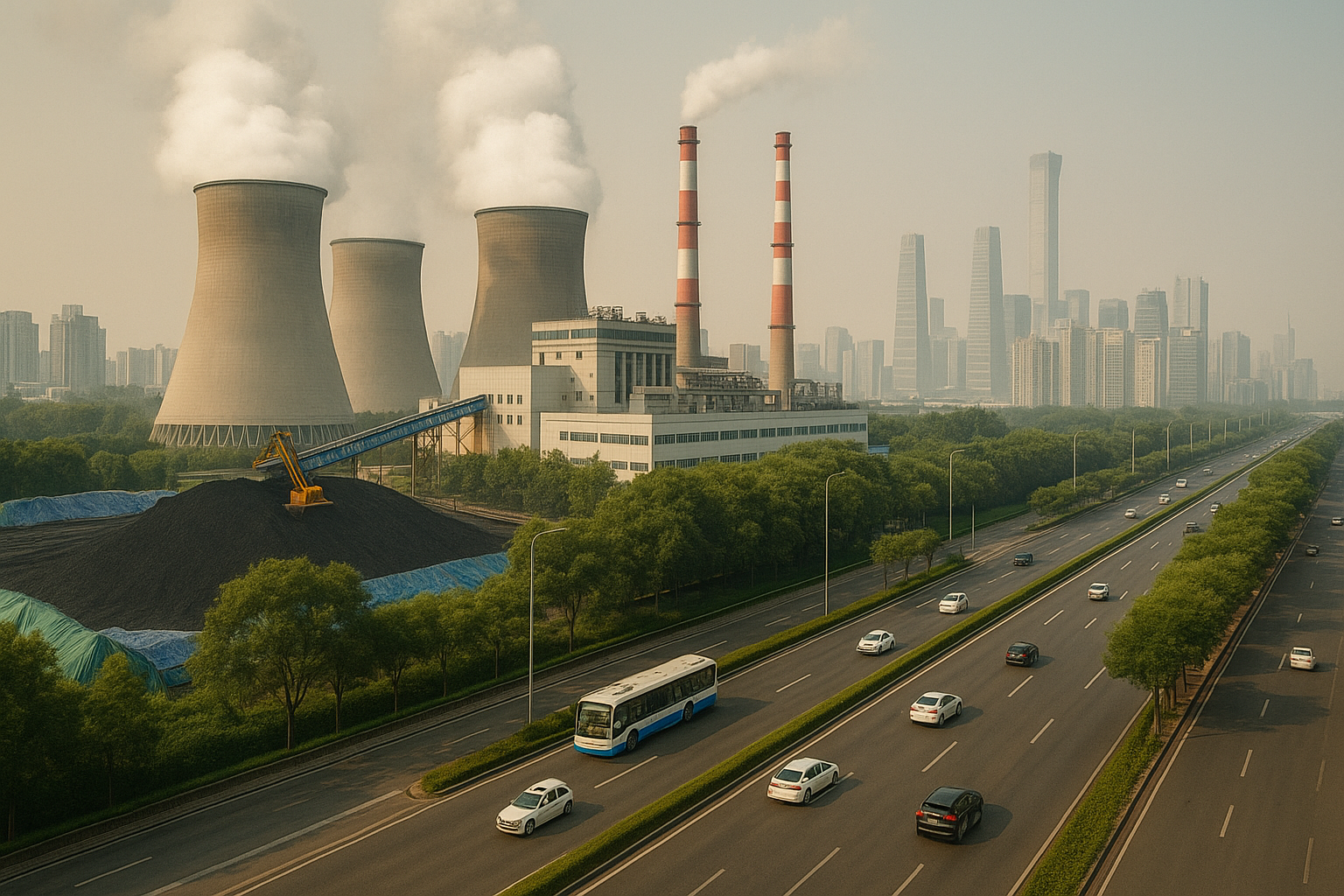From Smog to Sustainability: China’s Air Quality Leap Backed by ADB and Green Finance
The ADB-PRC partnership significantly improved air quality in the Greater Beijing–Tianjin–Hebei region through a $2.55 billion program combining policy reform, green finance, and clean technology. The initiative achieved major reductions in pollutants and greenhouse gases, offering a replicable model for sustainable development.

In response to its worsening air pollution crisis, the People’s Republic of China (PRC), with support from the Asian Development Bank (ADB) and key research institutes like the Chinese Academy of Environmental Planning and Nanjing University, launched one of the world’s most ambitious air quality improvement programs. The focus was the Greater Beijing–Tianjin–Hebei (BTH) region, China’s political and industrial heartland that contributes about one-third of national GDP but also bears the burden of some of the country’s worst air quality. The government’s national action plans, the Comprehensive Action Plan for Air Pollution Prevention and Control (2013–2017) and the Three-Year Action Plan for Winning the Blue Sky War (2018–2020), targeted key pollutants such as PM2.5, sulfur dioxide, and nitrogen oxides. Yet, policy fragmentation, funding gaps, and heavy coal dependence continued to slow progress.
In 2015, the ADB and Chinese authorities joined forces to create a five-year, $2.55 billion lending initiative designed to reinforce these national goals through practical, scalable projects. The program featured a blend of policy reform, clean energy investments, and pioneering financial instruments. It provided much-needed fiscal and technical support across eight integrated loans, each crafted to meet the distinct needs of local governments, banks, industries, and vulnerable rural populations.
From Hebei to Henan: Pioneering Policy and Fuel Reform
The starting point was Hebei Province, where more than 80% of the region’s PM2.5 emissions were concentrated. Through a $300 million policy-based loan, the first of its kind in China, ADB helped Hebei implement 17 targeted policy actions aimed at energy restructuring, pollution monitoring, and institutional coordination. These reforms laid the groundwork for an inclusive industrial transition, factoring in labor protection and job creation for workers displaced by pollution control mandates. Within months, Hebei had strengthened its regulatory enforcement systems and monitoring networks and formally adopted many of the reforms into its provincial development strategy.
The campaign then turned to Henan Province, China’s most populous and coal-dependent region. There, a results-based loan was used to roll out natural gas and biogas infrastructure to over a million customers, especially in rural areas. The province became a trailblazer in deploying dry fermentation technology to turn agricultural waste into piped biogas, a first in the PRC. By late 2024, Henan had reduced coal consumption by over a million tons annually and achieved a significant drop in CO₂ and particulate emissions. The approach offered not only environmental dividends but also income-generating opportunities for farmers through biomass supply chains.
Green Finance Unleashed: Innovations in Lending and Impact
A major innovation of the program was the creation of specialized green finance platforms. Through financial intermediation loans, institutions like the China National Investment and Guaranty Corporation (I&G) and the Bank of Xingtai were empowered to extend tailored credit products, such as guarantees, leases, and loans, to green projects led by small- and medium-sized enterprises (SMEs) and energy service companies. The Green Financing Platform, launched under I&G, became a flagship initiative. By 2024, it had supported 2,700 subprojects and mobilized $6.3 billion in commercial co-financing. The range of investments included solar rooftop systems, waste-to-energy plants, and electric buses. In Zibo, for instance, ADB financing facilitated the deployment of 7,000 electric vehicles leased to an urban ride-hailing platform, an emblem of sustainable mobility.
In Shandong Province, the Shandong Green Development Fund (SGDF) emerged as another standout. It attracted over €690 million in private capital and €260 million from institutional partners, including AFD and KfW. SGDF invested in large-scale solar manufacturing, China’s largest electric vehicle charging network, and a nationwide green logistics platform. These efforts brought direct technological upgrades to over 200 cities and demonstrated how blended finance can scale climate mitigation.
Cleaner Homes and Cities: Heating and Cooling Transformation
In Shandong and Henan, where coal remains dominant in residential and industrial energy use, the program promoted clean heating and cooling systems. The Shandong Clean Heating and Cooling Project pioneered the use of geothermal, biomass, and waste heat for district energy, making Shanghe County the PRC’s first fully coal-free heating zone. By late 2024, the initiative had delivered clean heating for 6.92 million square meters and cooling for 2.2 million square meters, transforming life for over 140,000 rural households.
At the same time, the Henan Cleaner Fuel Switch Program was linked directly with ADB’s Private Sector Operations Department. Nonsovereign loans of $50 million and later $100 million were extended to Henan Tian Lun Gas Group to ensure last-mile gas delivery and improve methane leakage management. These projects emphasized gender-inclusive design, with more than 60% of participants in fuel-use awareness campaigns being women.
Real Results and a Roadmap for the Region
The program delivered measurable, high-impact outcomes. From 2015 to 2023, PM2.5 levels in the BTH region fell by 44.2%, sulfur dioxide by 76.3%, and nitrogen oxides by 34.8%. The percentage of days with good air quality rose to 63.1%. In total, greenhouse gas emissions were cut by an estimated 36 million tons of CO₂ equivalent annually, while ADB’s loan portfolio generated $1.98 billion in climate finance. These outcomes place the initiative among the most successful regional air quality efforts globally.
Ultimately, this integrated, cross-sectoral program not only improved air quality but also built institutional capacity, mobilized private investment, and demonstrated scalable green technologies. It stands as a powerful example of how development finance, when aligned with national priorities and international partnerships, can drive transformative change. With China aiming to peak carbon emissions before 2030 and reach carbon neutrality by 2060, the lessons from the Greater BTH Region offer a replicable model for other economies confronting the dual crises of pollution and climate change.
- FIRST PUBLISHED IN:
- Devdiscourse










